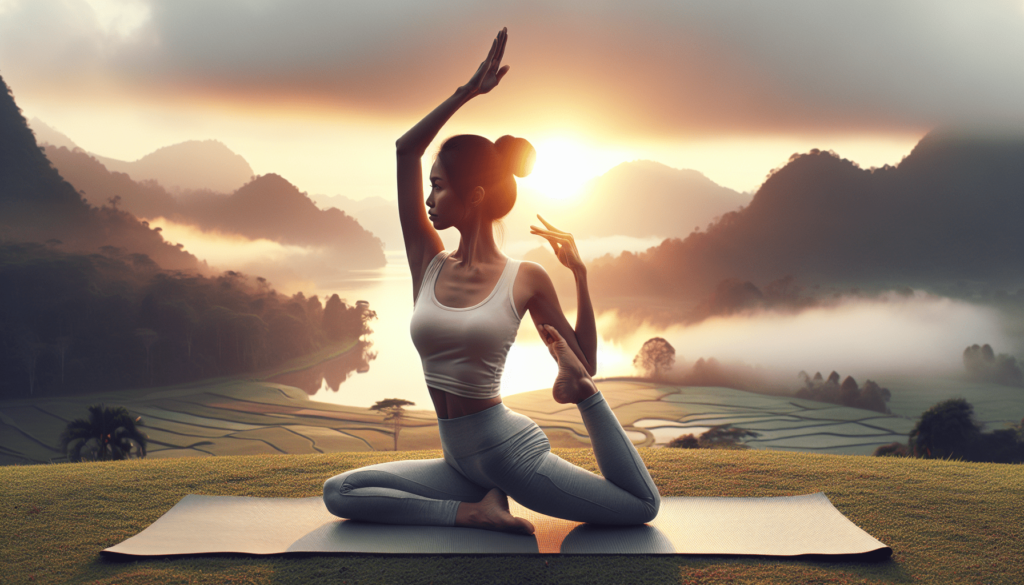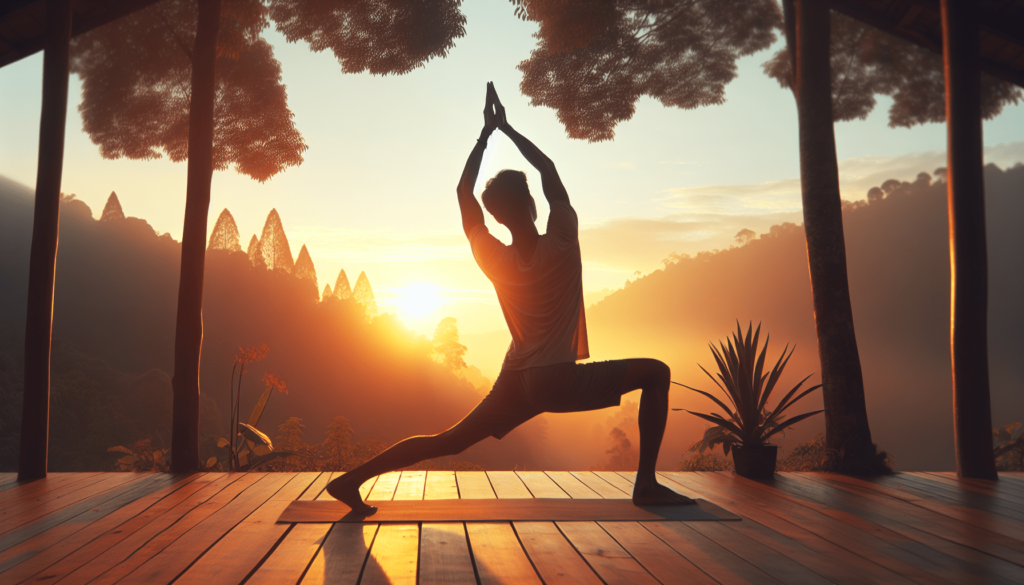So, have you ever tried reaching for your toes and realized that they’re as elusive as the proverbial pot of gold at the end of a rainbow? It’s okay, you’re not alone. Many people struggle with flexibility—it’s not like they’re handing it out with the complimentary almonds on your next flight. But fear not, because bending like a pretzel isn’t just for circus performers and yoga gurus. You, too, can improve your flexibility, and it doesn’t have to be as painful as deciding what’s for dinner.
Understanding Flexibility: Not Just For Rubber Bands
Before we stretch our way into the specifics, let’s talk about flexibility itself. Why is it important? Apart from the ability to bedazzle friends by doing the splits on command, flexibility enhances overall physical performance, helps prevent injuries, and makes you feel like the elegant swan you’ve always wanted to be. It’s like the unsung hero of fitness, hiding in the background but ready to steal the spotlight.
What Is Flexibility Anyway?
Flexibility refers to the ability of your joints and muscles to move through their full range of motion. It’s that beautiful symphony of muscle coordination and mobility that allows you to reach for the remote under the couch without pulling a hamstring. To put it into perspective, we were all born with the flexibility of a cake mix, but life—and gravity—tends to stiffen us up over time.
The Benefits of Being Flexibly Fabulous
Why should you get excited about the idea of touching your toes or even your nose without cringing in pain? Because the benefits of improved flexibility extend well beyond impressive party tricks:
-
Reduced Risk of Injury: Think of flexibility as your own personal body insurance. It helps prevent injuries by ensuring that your muscles and joints can handle the odd movements they might be forced to endure on a daily basis.
-
Improved Posture: Flexibility isn’t just about achieving that enviable pirouette. It helps maintain better posture, so you stand tall and confident, like a meerkat on lookout duty. No more resembling the letter “C” while hunching over your computer.
-
Increased Blood Flow and Nutrient Delivery: Stretching encourages blood flow, pumping oxygen and nutrients to the muscles so they can function like the well-oiled machine you’ve always imagined yourself to be.
-
Enhanced Athletic Performance: Greater flexibility can improve your performance in physical activities. Giving you the reflexes of a cat – well, perhaps a cat that skipped one or two yoga classes, but a cat nonetheless.
-
Decrease in Muscular Tension and Stress: Flexibility exercises can lead to the untangling of your muscle knots, providing a powerful boost in relaxation. Just imagine your muscles on a spa day; without the cucumber slices.
Getting Started: The Safe Stretch
No one wants to walk out of a stretching session feeling like they just survived a medieval rack torture. The key to starting a flexibility regimen lies in knowing how to stretch correctly and safely, much like navigating a new recipe without setting the kitchen on fire.
Types of Stretching
Don’t worry—stretching isn’t one size fits all. Much like ice cream flavors, there are different varieties, and picking your favorite can be part of the journey.
Static Stretching
This involves holding a stretching position for a period, ideally somewhere comfortably between “This is delightful” and “Oops, forgot about gravity.” Typically done after a workout, these stretches are great for winding down and maintaining flexibility.
Dynamic Stretching
Think of dynamic stretching as static stretching’s over-caffeinated sibling. It’s active and best done before exercising to get those muscles awake. Activities involve moving parts of your body to gradually increase reach, speed, or both. Picture a choreographed dance routine to a forgotten 80s hit.
Ballistic Stretching
Ah, ballistic stretching—the daredevil of the stretching world! Characterized by using momentum in an attempt to push beyond normal range of motion, it’s best approached under professional supervision. It’s sort of like attempting to bungee jump without a cord. Exercise caution.
PNF Stretching (Proprioceptive Neuromuscular Facilitation)
A fancy term for a stretch that combines the classical “Stretch and Hold” but brings a friend. It involves stretching a muscle, contracting it isometrically, and then relaxing into a further stretch. Think of it as the buddy cop movie of stretches.
How to Stretch Safely
Sure, the idea might be alluring to shock your body into flexibility overnight, but a gradual approach is best. Rome wasn’t built in a day, and neither were those effortlessly bendable limbs you see on TV. Always warm-up before stretching to avoid injuries, never stretch to the point of pain (mild discomfort is okay), and breathe deeply, channeling your inner zen master.
Common Mistakes That Even Stretch Armstrong Might Make
Even the most seasoned athletes can stumble into a few stretching faux pas now and then. Here’s what to avoid:
-
Skipping Warm-Up: Jumping into a stretching session cold is akin to queuing up for a rollercoaster ride without tightening your harness. Bad idea.
-
Bouncing During a Stretch: Unless you’re Tigger, bouncing should be kept to a minimum during static stretches, as it may cause injuries.
-
Ignoring Consistency: Rome may not have been built in a day, but without consistency, you won’t build any flexibility either. Regular practice is key.

Easy Stretching Techniques: Your Secret Weapon for Flexibility
Now that you’re armed with knowledge, it’s time to throw some stretchy wisdom into action with a few straightforward techniques so simple that even your pet goldfish could achieve muscle suppleness—but they won’t, because fins.
Stretching for Neck
Neck Stretch:
- Stand or sit with your spine straight.
- Slowly tilt your head to the right, ear towards your shoulder without lifting the shoulder.
- Hold for 15 to 30 seconds.
- Repeat on the left side.
Tip: Imagine you’re listening to the world’s quietest podcast.
Stretching for Shoulders
Shoulder Stretch:
- Stand or sit with a straight back and feet shoulder-width apart.
- Extend your right arm across your body at shoulder height.
- Use your left hand to gently press your right arm towards your chest.
- Hold for 15 to 30 seconds and switch arms.
Hint: Channel those enthusiastic ‘Pointer of the Month’ vibes.
Stretching for Back
Cat-Cow Stretch:
- Get on all fours, hands under shoulders, knees under hips.
- Inhale and arch your back, dropping your belly towards the ground (cow position).
- Exhale, round your spine towards the ceiling (cat position).
- Continue for 5-10 breaths, or until your inner feline feels sufficiently expressed.
Fun fact: Cats and cows are still wondering why they’re called upon for this stretch.
Stretching for Hips
Hip Flexor Stretch:
- Kneel on your right knee, left foot in front, similar to lunge.
- Push your hips forward, feeling the stretch in your right hip.
- Hold for 30 seconds and switch sides.
Cheat code: Pretend you’re proposing to your reflection in the mirror. Accept your own proposal for good measure.
Stretching for Legs
Seated Forward Fold:
- Sit on the ground with legs straight in front.
- Inhale, then exhale as you lean forward from the hips.
- Aim your fingertips for your toes.
- Hold for 20-30 seconds.
Consider this the telepathic equivalent of sending messages to your toes that they’re missed.
Debunking Flexibility Myths: The Truth Will Stretch You Out!
Like ghost stories around a campfire, the world of flexibility is rife with myths and dubious claims. Let’s unravel some common misconceptions before they stretch any further.
Myth 1: You Have to be Born Flexible
The claim: Flexibility is a genetic lottery. Reality: Sure, genetics play a role, but you aren’t sentenced to a life of stiffness. Like learning salsa, flexibility is a skill that can be improved with practice.
Myth 2: Stretching Before a Workout is a Must
The confusion: Stretching prevents all potential injuries pre-workout. Actual advice: Incorporate dynamic stretching before and leave the static stretching for post-workout. Your muscles deserve a proper warm-up first.
Myth 3: Flexibility is Only for Athletes
Those elusive elite athletes certainly need flexibility, but everyday folks benefit too. Whether reaching for laundry or the cookie jar, everyone can appreciate being limber, no gym membership required.
Myth 4: More Pain, More Gain
The myth: Stretch until you see stars. The truth: Stretch until comfortably challenged, avoiding the pain train that leads to injury. Gritted teeth and white knuckles are not badges of stretching honor.
Myth 5: Stretching Isn’t for Weight Loss
Stretching does contribute to weight maintenance through improved muscle function and mobility. It doesn’t replace the treadmill, but it’s no slouch in the holistic approach to wellness.

Practical Tips to Transform into a Flexibility Expert
Alright, so you’ve pledged allegiance to the land of the flexible. But how to keep from falling off the yoga wagon before you’ve even attempted downward dog? Just follow these sage morsels of advice with the same devotion your cat has for cardboard boxes.
Consistency is Key
Much like a devoted episode binge on a lazy Sunday, regular stretching is essential. Five to seven days a week is ideal. Measure progress, celebrate milestones, even if it’s just reaching the TV remote without groaning.
Grab A Friend or Join a Class
Nothing motivates quite like pairing with someone who’s equally invested. Plus, stifled laughter at a friend’s less-than-graceful attempt distracts from your own zany moves.
Incorporate Yoga or Pilates
These invite you to embrace positions and techniques that might make you question life choices. They, however, offer effective avenues for flexibility improvements.
Set Achievable Goals
Avoid grandiose promises like becoming a human twisty straw overnight. Small milestones, like touching your toes or eating without shoulder pain, will feel like a mechanized teddy bear hug.
Celebrate Progress
Every time your fingers inch closer to your toes or your posture grows straighter, celebrate it! Festivities can include deranged happy dances—those are calorie-free.
Conclusion: Time to Stretch Your Limits
Congratulations! You now possess enough flexibility wisdom to rival even the bendiest of yogis or at least pass as an expert at an impressively informed dinner party. The journey to improving your flexibility is as much mental as it is physical. Take it slow, enjoy the progress, and hydrate frequently (because the only optimal hydration is wine).
In the grand scheme of life, flexibility provides not just physical benefits but mental clarity too, like the reset button we all wish was available during annoying conversations. So go ahead, stretch, yawn, assume impressive statuesque poses in public, and always maintain your sense of humor along the way. After all, flexibility is all about keeping your mind and body open, even if your joints occasionally disagree.
